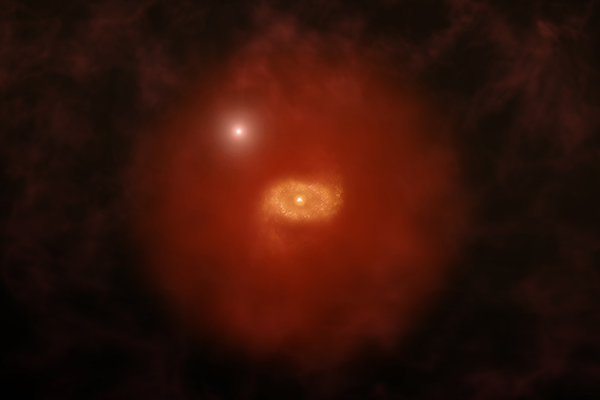
Cold gas and dust in normal, star-forming galaxies at high redshift
In this talk, I will review our current knowledge of the cold gas properties of normal (main-sequence), star-forming galaxies across cosmic time. Great progress has been achieved thanks to ALMA and the upgraded capabilities of NOEMA, in particular, based on the observations of the CO and [CII] transitions and the dust continuum. I will put emphasis on three areas: 1) the evolution of the molecular gas properties, and their implications for the process of star formation, 2) the importance of the molecular phase in gas outflows, and 3) cold gas kinematics. I will finish by introducing the new ALMA Large Program CRISTAL that will provide, together with observations from HST and JWST, a census of the gas, dust, and stars on kiloparsec scales in normal, star-forming galaxies when the Universe was only 1 Gyr old.
Speaker: Rodrigo Herrera-Camus, Universidad de Concepción
Image Description and Credit: Artist impression of a progenitor of Milky Way-like galaxy in the early universe with a background quasar shining through a ‘super halo’ of hydrogen gas surrounding the galaxy. New ALMA observations of two such galaxies reveal that these vast halos extend well beyond the galaxies’ dusty, star-forming disks. The galaxies were initially found by the absorption of background quasar light passing through the galaxies. ALMA was able to image the ionized carbon in the galaxies’ disks, revealing crucial details about their structures. Credit: Alexandra Angelich (NRAO/AUI/NSF)
